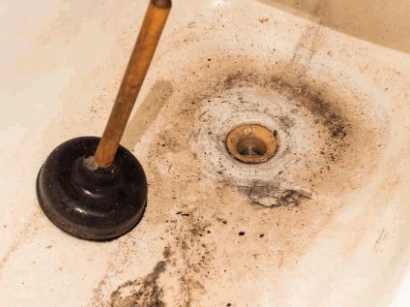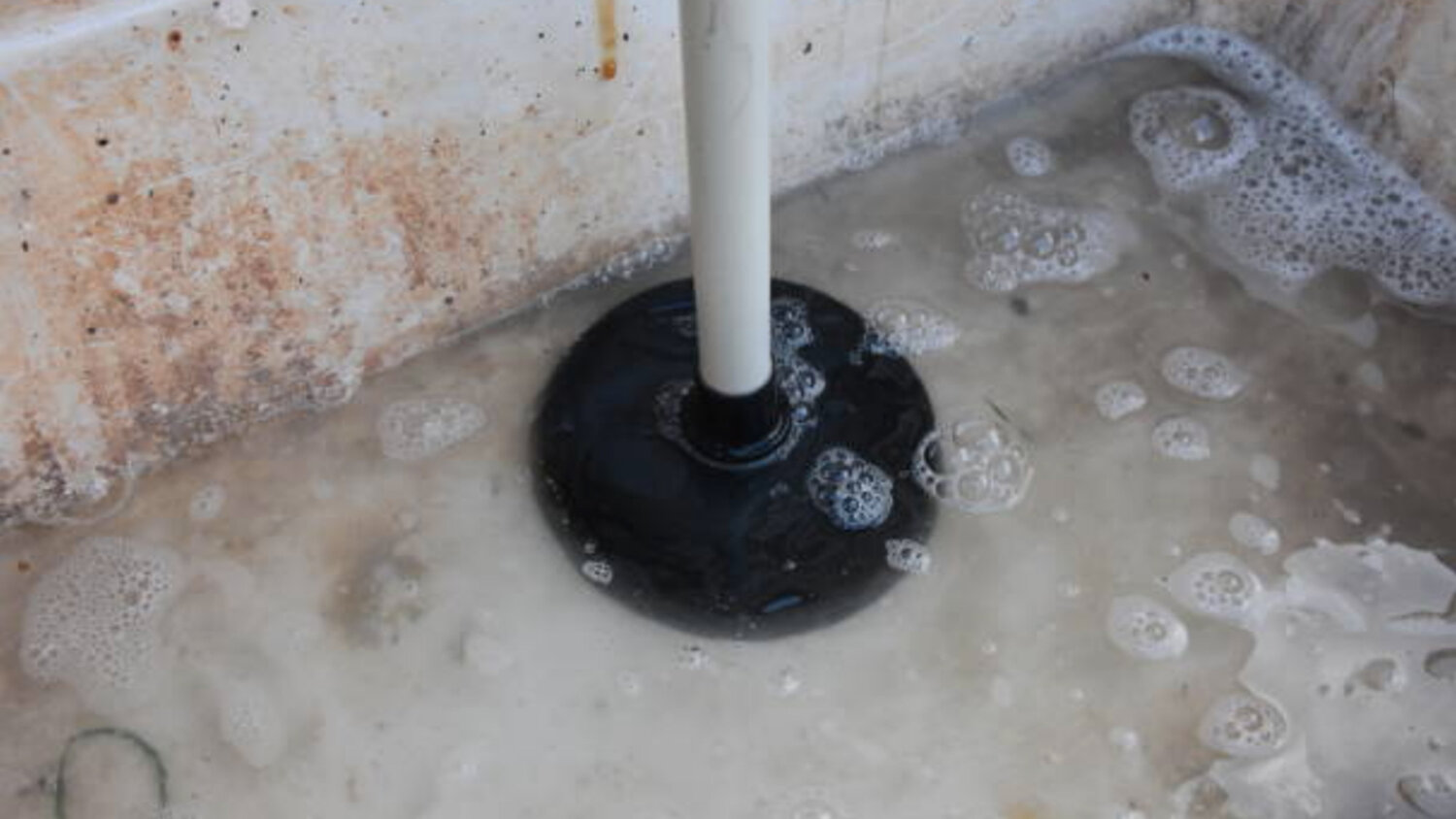How to Effectively Use Plunger and Drain Cleaner: Professional Tips
How to Effectively Use Plunger and Drain Cleaner: Professional Tips
Blog Article
How do you actually feel on the subject of How To Use Your Toilet Plunger Correctly in 5 Easy Steps?

Intro
Proper upkeep of family drains is essential for stopping clogs and making certain smooth water flow. Among the key devices in every homeowner's toolkit is the bettor, alongside different drainpipe cleansers developed to take on persistent clogs successfully. This short article discovers how to make use of plungers and drainpipe cleansers efficiently to maintain your drains streaming openly.
Section 1: Comprehending Bettors
Types of Plungers
There are a number of sorts of plungers offered, each created for various types of drains and obstructs. One of the most usual types include mug plungers, flange bettors, and accordion bettors.
How Plungers Work
Plungers work on the principle of creating stress and suction to remove clogs. When appropriately used over a drainpipe, they develop a vacuum cleaner that can take out particles or separate clogs.
Picking the Right Bettor
Picking the appropriate bettor relies on the kind of drain and the nature of the blockage. Cup plungers are perfect for sinks and tubs, while flange bettors are much better fit for bathrooms due to their layout.
Typical Errors with Plungers
Avoiding these blunders makes sure effective plunging: inappropriate seal around the drainpipe, inadequate pressure, and unclear surrounding particles.
Section 2: Using Plungers Successfully
Preparation
Prior to plunging, make sure the bettor covers the drain totally and creates a tight seal. Clear any kind of visible particles around the drainpipe opening.
Technique
Beginning with gentle diving motions to develop suction. Rise pressure progressively, using a stable rhythm. Repeat as needed until the drainpipe removes.
Fixing Tips
If diving doesn't function, attempt adjusting the seal, using petroleum jelly for a far better seal, or utilizing a various sort of bettor.
Section 3: Understanding Drain Cleansers
Kinds Of Drainpipe Cleansers
Drain pipes cleaners can be chemical or enzymatic. Chemical cleaners utilize strong chemicals to dissolve clogs, while enzymatic cleaners make use of all-natural enzymes to break down raw material.
Exactly How Drain Cleaners Work
Chemical cleansers respond with blockages to dissolve them, while chemical cleansers break down organic materials like hair and oil without hurting pipes.
Safety and security Factors to consider
Always put on handwear covers and eye protection when making use of chemical drainpipe cleaners. Make certain appropriate ventilation and comply with manufacturer guidelines very carefully.
Eco-Friendly Alternatives
Consider making use of vinegar and baking soda or enzyme-based cleansers for environmentally friendly alternatives that are safer for pipes and the setting.
Section 4: Utilizing Drainpipe Cleaners Successfully
Application Strategies
Pour chemical cleaners straight right into the drainpipe opening. Allow them to benefit the recommended time before flushing with warm water. Chemical cleansers need to sit overnight.
Preventative measures
Stay clear of mixing different types of cleansers, as this can create poisonous fumes. Never ever utilize chemical cleaners combined with a plunger, as spilling can take place.
Managing Stubborn Blockages
For persistent obstructions, consider making use of a plumbing serpent or calling a professional plumbing professional to prevent damages to pipelines.
Final thought
Finally, understanding exactly how to make use of bettors and drain cleansers properly is important for preserving healthy and balanced plumbing systems. By choosing the right tools and methods, house owners can take on small clogs and prevent major plumbing issues down the line.
How To Properly Use A Plumbing Snake To Clear Drains
When any drain clogs in our home arise, we tend to gravitate toward the plunger and little else. In cases where the plunger and its vacuum-created pressure are not able to clear clogs, many immediately move to harmful chemicals or simply call their plumber to fix the issue.
we’re happy to help with all drain cleaning needs and concerns. This includes informing you on a few other home remedies you may have at your disposal for minor to moderate clogs, one of which is the use of a plumbing snake. Many people have never used one of these before – let’s go over the steps to take when your drain clogs and you have a plumbing snake available.
Attempt Plunger Use
The first step here, as we noted above, should indeed be to grab your plunger when you notice a drain clog and attempt to resolve it this way. If you’re unsure how to use a particular type of plunger, our plumbers can answer any questions you have. If this doesn’t do the trick, however, you move on to the snake.
Locate And Prepare Snake
A plumbing snake is a metal or plastic device that’s generally about a quarter of an inch thick. It’s design with significant extensions, meant to reach down into your clogged drain and push the clog out. Snakes also contain drain augers that will latch onto and push stubborn blockages.
If your plunger doesn’t clear a clog, locate your snake and bring it to the drain in question. We also recommend keeping a bucket nearby to collect the clog once you pull it out, plus we’d advise wearing goggles and possibly protective gloves.
Feed Snake
Once you’re ready to go, feed the snake slowly down the drain, using the crank device it comes with to keep it moving until it finds the clog. Once this happens, much of the clog will be latched onto the coil so you can pull it out, while the rest will simply break up and flow downward.
Detach Debris
Remove the snake slowly from the drain, and once you’ve done so, pick off any debris that’s stuck to the coil. This is another area where wearing gloves is a must.
Flush Drain
Finally, take a few minutes to ensure the snake has done its job correctly. If you’ve been using it on a toilet, flush the toilet a couple times and make sure everything flows well. If you’ve used it on a different drain, flush it with some room temperature water.
https://www.mybuddytheplumber.com/blog/how-to-properly-use-a-plumbing-snake-to-clear-drains/

Application Strategies
Pour chemical cleaners straight right into the drainpipe opening. Allow them to benefit the recommended time before flushing with warm water. Chemical cleansers need to sit overnight.
Preventative measures
Stay clear of mixing different types of cleansers, as this can create poisonous fumes. Never ever utilize chemical cleaners combined with a plunger, as spilling can take place.
Managing Stubborn Blockages
For persistent obstructions, consider making use of a plumbing serpent or calling a professional plumbing professional to prevent damages to pipelines.
Final thought
Finally, understanding exactly how to make use of bettors and drain cleansers properly is important for preserving healthy and balanced plumbing systems. By choosing the right tools and methods, house owners can take on small clogs and prevent major plumbing issues down the line.
How To Properly Use A Plumbing Snake To Clear Drains
When any drain clogs in our home arise, we tend to gravitate toward the plunger and little else. In cases where the plunger and its vacuum-created pressure are not able to clear clogs, many immediately move to harmful chemicals or simply call their plumber to fix the issue.
we’re happy to help with all drain cleaning needs and concerns. This includes informing you on a few other home remedies you may have at your disposal for minor to moderate clogs, one of which is the use of a plumbing snake. Many people have never used one of these before – let’s go over the steps to take when your drain clogs and you have a plumbing snake available.
Attempt Plunger Use
The first step here, as we noted above, should indeed be to grab your plunger when you notice a drain clog and attempt to resolve it this way. If you’re unsure how to use a particular type of plunger, our plumbers can answer any questions you have. If this doesn’t do the trick, however, you move on to the snake.
Locate And Prepare Snake
A plumbing snake is a metal or plastic device that’s generally about a quarter of an inch thick. It’s design with significant extensions, meant to reach down into your clogged drain and push the clog out. Snakes also contain drain augers that will latch onto and push stubborn blockages.
If your plunger doesn’t clear a clog, locate your snake and bring it to the drain in question. We also recommend keeping a bucket nearby to collect the clog once you pull it out, plus we’d advise wearing goggles and possibly protective gloves.
Feed Snake
Once you’re ready to go, feed the snake slowly down the drain, using the crank device it comes with to keep it moving until it finds the clog. Once this happens, much of the clog will be latched onto the coil so you can pull it out, while the rest will simply break up and flow downward.
Detach Debris
Remove the snake slowly from the drain, and once you’ve done so, pick off any debris that’s stuck to the coil. This is another area where wearing gloves is a must.
Flush Drain
Finally, take a few minutes to ensure the snake has done its job correctly. If you’ve been using it on a toilet, flush the toilet a couple times and make sure everything flows well. If you’ve used it on a different drain, flush it with some room temperature water.
https://www.mybuddytheplumber.com/blog/how-to-properly-use-a-plumbing-snake-to-clear-drains/

I came across that write up about How to Unclog Your Sink with a Plunger while browsing on the internet. Those who appreciated our blog posting if you please consider to pass it around. We thank you for reading our article about Tips on How to Effectively Use a Plunger.
Rates Report this page